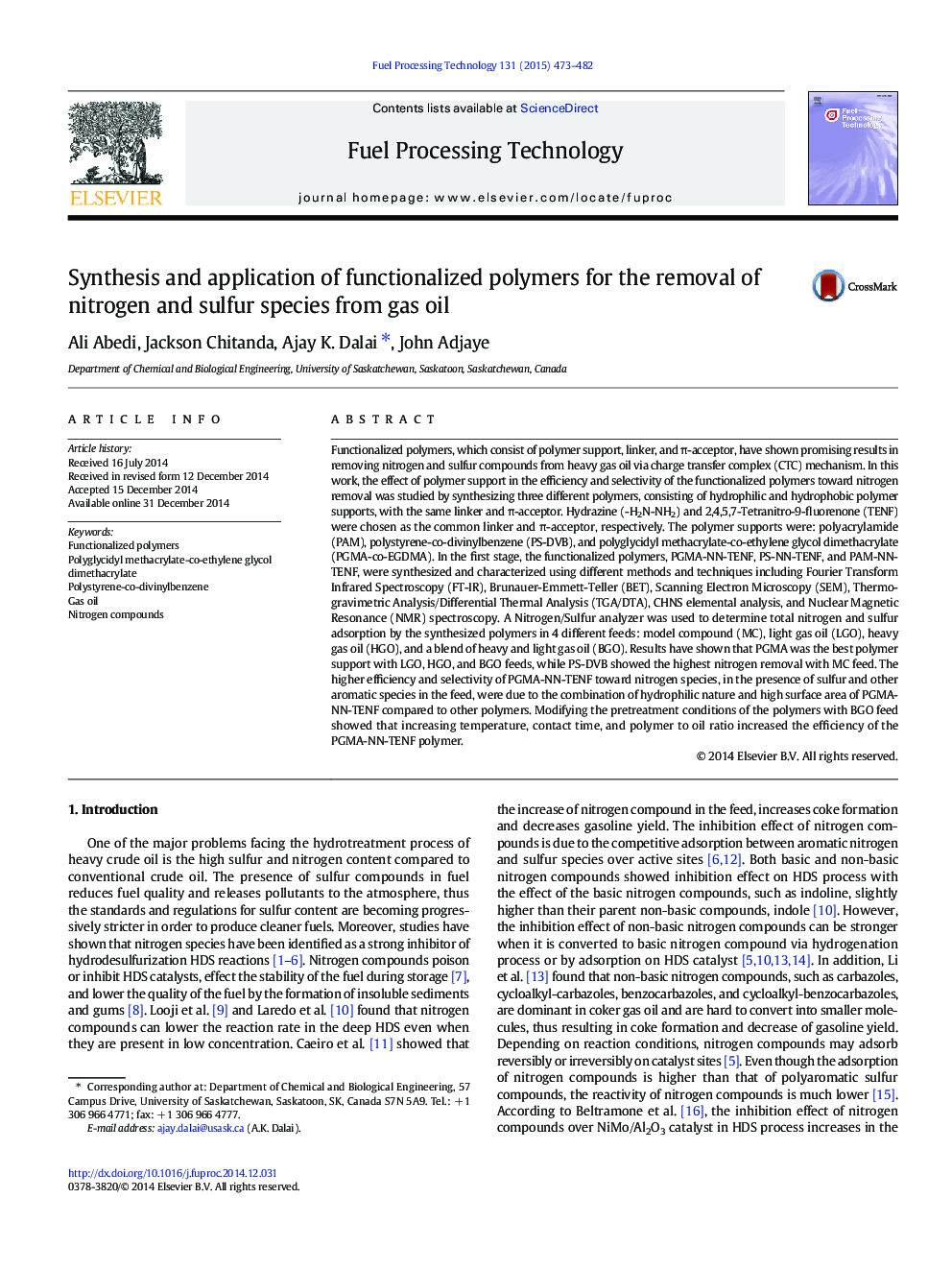| Article ID | Journal | Published Year | Pages | File Type |
|---|---|---|---|---|
| 209391 | Fuel Processing Technology | 2015 | 10 Pages |
•The effect of polymer support on the removal of N- and S- compounds was tested.•Three functionalized polymers with common linker and π-acceptor were synthesized.•The synthesized polymers were tested with different gas oil feeds.•PGMA-NN-TENF showed the best performance with light and heavy gas oil feeds.
Functionalized polymers, which consist of polymer support, linker, and π-acceptor, have shown promising results in removing nitrogen and sulfur compounds from heavy gas oil via charge transfer complex (CTC) mechanism. In this work, the effect of polymer support in the efficiency and selectivity of the functionalized polymers toward nitrogen removal was studied by synthesizing three different polymers, consisting of hydrophilic and hydrophobic polymer supports, with the same linker and π-acceptor. Hydrazine (-H2N-NH2) and 2,4,5,7-Tetranitro-9-fluorenone (TENF) were chosen as the common linker and π-acceptor, respectively. The polymer supports were: polyacrylamide (PAM), polystyrene-co-divinylbenzene (PS-DVB), and polyglycidyl methacrylate-co-ethylene glycol dimethacrylate (PGMA-co-EGDMA). In the first stage, the functionalized polymers, PGMA-NN-TENF, PS-NN-TENF, and PAM-NN-TENF, were synthesized and characterized using different methods and techniques including Fourier Transform Infrared Spectroscopy (FT-IR), Brunauer-Emmett-Teller (BET), Scanning Electron Microscopy (SEM), Thermogravimetric Analysis/Differential Thermal Analysis (TGA/DTA), CHNS elemental analysis, and Nuclear Magnetic Resonance (NMR) spectroscopy. A Nitrogen/Sulfur analyzer was used to determine total nitrogen and sulfur adsorption by the synthesized polymers in 4 different feeds: model compound (MC), light gas oil (LGO), heavy gas oil (HGO), and a blend of heavy and light gas oil (BGO). Results have shown that PGMA was the best polymer support with LGO, HGO, and BGO feeds, while PS-DVB showed the highest nitrogen removal with MC feed. The higher efficiency and selectivity of PGMA-NN-TENF toward nitrogen species, in the presence of sulfur and other aromatic species in the feed, were due to the combination of hydrophilic nature and high surface area of PGMA-NN-TENF compared to other polymers. Modifying the pretreatment conditions of the polymers with BGO feed showed that increasing temperature, contact time, and polymer to oil ratio increased the efficiency of the PGMA-NN-TENF polymer.
